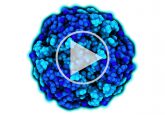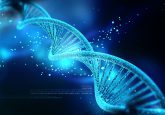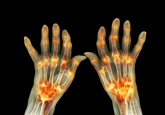The use of LC–MS in bioanalytical discovery: an interview with Salinda Wijeratne

Salinda Wijeratne
Large Molecule Scientific Lead, Covance (WI, USA)
My name is Salinda Wijeratne. I am the Large Molecule Scientific Lead for Discovery Bioanalytical services at Covance. Soon after I graduated with my doctoral degree from Michigan State University (MI, USA), I started my career as a method development chemist. I have always been passionate about the science of drug discovery. My main focus as a method development chemist is to develop reliable LC–MS based methods in biological fluids and tissues. In addition to performing method development, I also play a significant role as the scientific lead for the large molecule LC–MS service line developing and implementing new approaches, establishing workflows and training fellow scientists.
Could you explain the key principles of LC–MS and how you use the technique at Covance?
With the evolution in tandem mass spectrometry (MS) coupled with liquid chromatography (LC) in the mid-1990, this platform became popular as an analytical tool for analyzing therapeutics in complex matrices due to its capability to provide multidimensional selectivity and superior sensitivity. LC–MS is a powerful tool offering two layers of selectivity. The first layer is the chromatographic separation of the biological sample depending on the chemical nature of each component. The second layer is the selectivity gained through the separation of ions based on their mass-to-charge ratio. This high level of selectivity provides confidence in the quantitative data generated for study support in discovery bioanalysis. The evolution of the LC–MS platform has also continued to push the limit of detection and attainable LLOQs. At Covance Discovery Bioanalytical, we perform both small and large molecule quantification via LC–MS in a variety of matrices from simple to complex and unconventional. The high selectivity offered by LC–MS is exploited to develop high throughput assays with minimal optimization and lead time. This enables us to maintain quick turn-around-time from method development to sample analysis using a qualified assay.
What are some of the key challenges in using LC–MS for large molecule (LM) quantitation?
Bioanalysis of LM therapeutics mainly depends on the lessons learned from small molecule quantification. I believe that a careful evaluation is needed to reliably apply the qualified method to the discovery samples. LM therapeutics are different from small molecules in not only size but also in structural complexity and their ability to facilitate post-translational modifications. This multifaceted, complex information is accommodated by attaining multiple electronic charge states in LC–MS. From a quantification standpoint, the multi-charge state introduces many challenges in LC–MS workflows, in terms of gaining adequate sensitivity and selectivity. In order to develop an effective LC–MS method, this platform is coupled with offline sample preparation strategies. Peptide or protein level enrichment coupled with protein digestion can be used to improve selectivity and sensitivity. These workflows are inherently time-consuming and contain multiple steps each of which require optimization. Apart from this workflow complexity, lack of standardized reagents, variability in protein digestion and longer digestion times are key challenges for throughput and assay quality. In addition, finding a suitable internal standard is critical when using a discovery grade assay to analyze the samples. Most common approaches use a stable labelled protein or peptide. However, a stable labelled protein might not be available for all drug candidates in the discovery phase, while longer synthesis times for stable label peptide also poses a challenge for quick turn-around times. In discovery bioanalysis these challenges can be overcome by standardizing each step, using generic reagents, employing a universal stable labelled protein internal standard and using best in class sample preparation technologies.
What techniques do you use for tissue processing and analysis by LC–MS?
Tissue bioanalysis at early stages of drug discovery is very important in understanding the extent of the drug distribution to help predict toxicity, efficacy and exposure levels. Non-radiolabeled studies are typically supported by LC–MS and tissue processing is required to extract the analyte of interest before analysis. Determining proper homogenization technique while ascertaining the stability of the analyte remains a challenge for developing high throughput LC–MS based tissue methods. In the discovery phase, we perform a vast variety of tissues analysis and our standard approach is to employ mechanical homogenization to process these tissues. The tissue samples are diluted 5- or 10-fold with water/acetonitrile mixtures depending on the sample size and the target LLOQ. Adding a certain percentage of organic into the homogenization solution improves the solubilization of the drug. To analyze the study samples, calibration standards (CALs) and quality control (QC) samples are typically prepared in the same matrix. This is the most straightforward approach we have found with over 50 years of experience in analyzing tissues. A surrogate matrix, such as plasma or buffers, can be used but for discovery studies with typically small sample counts, the best approach is to match the matrix for CALs and QCs to the study samples to minimize matrix effects. In routine discovery tissue analysis, these optimized conditions will minimize the overall study time while providing high quality data.
What are your predictions for the next 5–10 years in this field? What do you hope to see?
LC–MS-based discovery bioanalysis will continue to grow with the advent of complex biologics and increased interest in biomarkers. The complexity of the existing LM therapeutics and advent of new drug modalities demand more selectivity, sensitivity and resolution to produce multi-dimensional data which can be facilitated by high resolution MS. With the leap in technology in terms of better instrumentation, improved ion-optics, more sensitive detectors, larger dynamic range and sophisticated automation; we can expect to see improvement in the selectivity, sensitivity and throughput of the assays. In the coming years, we can expect high-resolution mass spectrometry to be more prevalent in discovery bioanalysis.
This feature was produced in association with Covance. The opinions expressed in this feature are those of the author and do not necessarily reflect the views of Bioanalysis Zone or Future Science Group.






